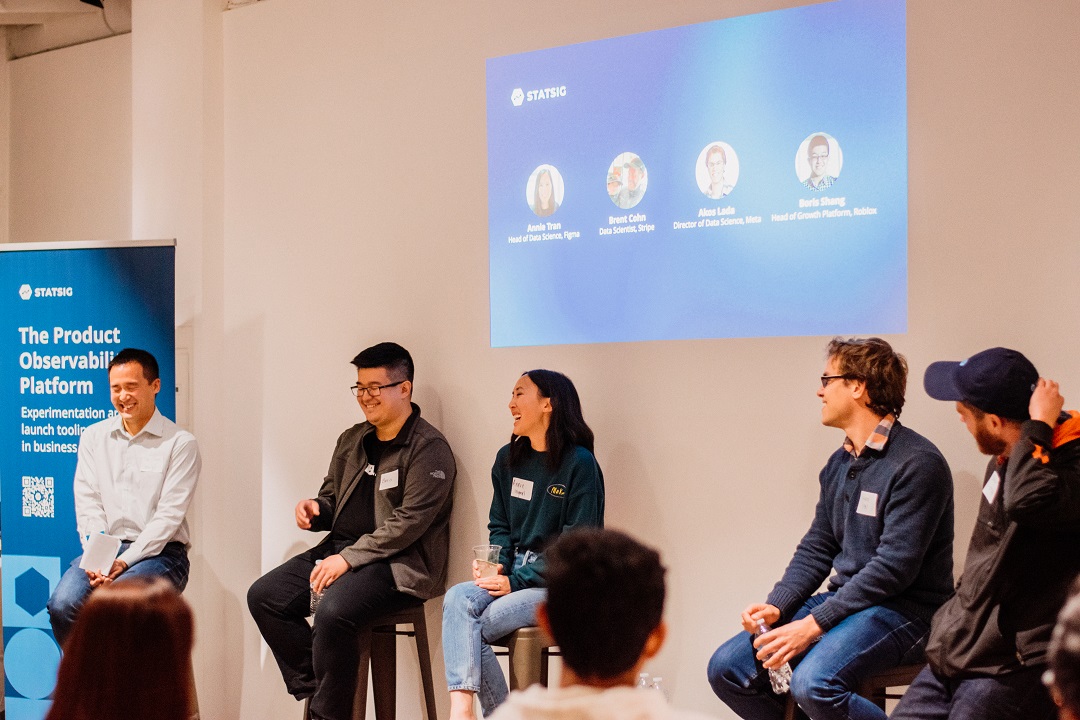
Last Tuesday, November 1st, Statsig brought a cadre of data science and experimentation fans together at a loft space in San Francisco’s Mission District for the first-ever Data Science Meetup.
Tech meetups in the Bay Area are nothing new, and in-person events are slowly coming back, but as large customer conferences transition to remote or recorded formats, this intimate event focused on in-person connection.
It didn’t matter if you were a longtime Statsig customer or RSVP’d to catch up with an old colleague—everyone was welcome and offered a La Croix or choice of data science-themed cocktail upon arrival. (Bonferroni Correction was slightly edged out by the crowd favorite Sample Ratio Mismatch)
Lead Data Scientist (and Slack community celebrity) Timothy Chan was there, moderating a lively panel with Roblox’s very engaging Boris Shang, the sharp B2B perspective of Annie Tran at Figma, Akos Lada’s insight from a model culture of experimentation at Meta, and Brent Cohn lighting up the room with hot takes from before and after he joined Stripe.
The efforts made to bring together such a diverse set of data backgrounds were worth it, yielding engaging questions and exciting anecdotes before, during, and after the panel.
A big shoutout was earned by all the attendees who shuffled work calendars and braved Caltrain schedules to join. The three dozen or so guests and panelists all came away with a comfortable new Statsig dad hat, the satisfaction only Bi-Rite catering can provide, and fresh ideas to take back to their teams.
It’s tough to capture the energy generated when an amazing group of people in the data community and Pierre Estephan’s DJ’ing skills combine forces, but I’m always up for a challenge. So, here are a few photos highlighting this fun, lightning-in-a-bottle event.
















